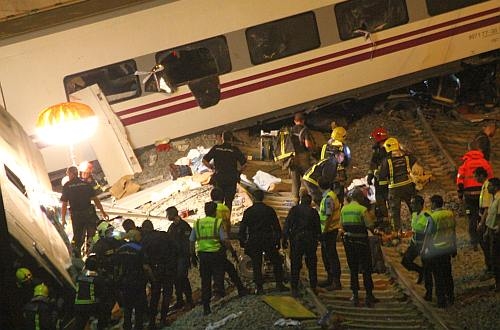The investigator is seeking evidence from the three men on a number of points, including the lack of lineside signs indicating the reduction in line speed from 200km/h to 80km/h on the approach to the curve where the accident took place, and the authorisation granted to Renfe in 2012 which allowed class 730 trains to operate on the Ourense – Santiago high-speed line with ETCS switched off, which was sanctioned without a proper risk management plan.
Five other Adif officials will also be required to give evidence: the rail traffic safety manager for the overall network, the regional safety manager and the regional track inspection manager (both from Adif's Northwestern division), as well as two inspectors.
"The deaths and injuries caused by the derailment are objectively attributable to all of them as all have had a real control over the source of danger," the judge stated before asking Adif to identify all of the directors who have served on its board since the opening of the line in December 2011.
Adif says its intends to appeal against this decision, without explaining the legal grounds or clarifying whether the appeal will attempt to discharge the responsibility of all those charged or only the senior managers.
Last week the judge rejected a petition issued by a victim's lawyer, former judge Mr Baltasar Garzón, to call Renfe officials into the process. In its appeal this week, Garzón argues that Renfe personnel should also be included in the future criminal trial, chiefly because of the decision to systematically switch off the ETCS onboard equipment.
However, Renfe president Mr Julio Gómez-Pomar, will have to give evidence before the judge as he is also a member of the Adif board.
Spanish rail authorities have conducted a thorough inspection of the entire mainline network during August to identify locations where similar risks may exist.
A new rule issued immediately after the accident by Adif came into force on September 1 obliging additional safety measures at these locations, now formally termed as "significant speed transitions." This involves installing Asfa balises, which will be connected to plain lineside signs indicating speed restrictions.
The Spanish rail accident investigation body CIAF is still preparing a full report on the causes of the accident.

